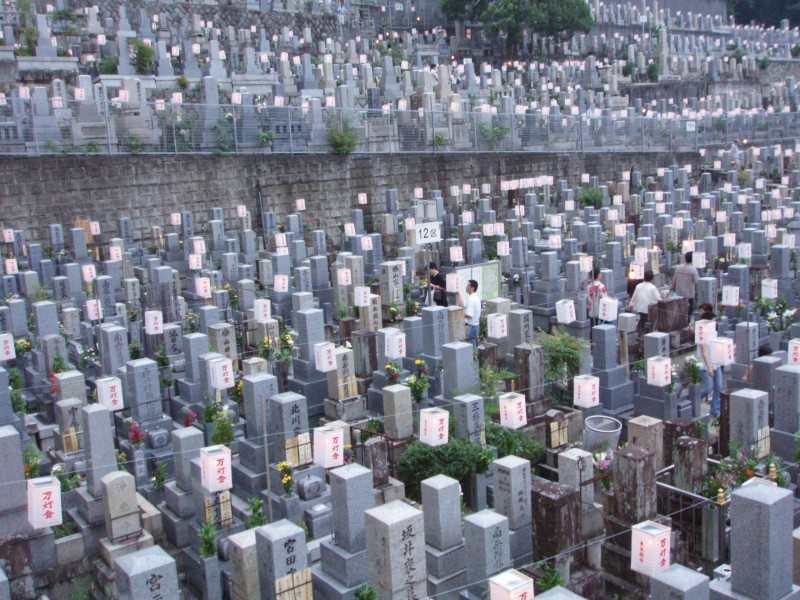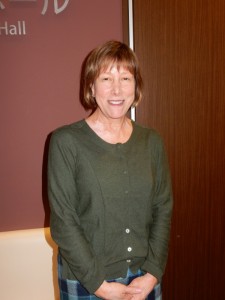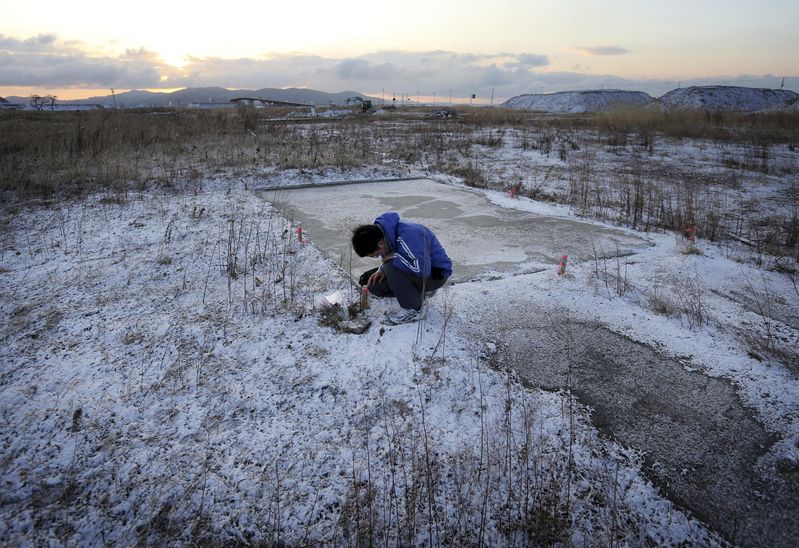
Japanese graveyard at Obon. Uniformly Buddhist?
This series consists of adapted extracts from Elizabeth Kenney’s groundbreaking work on Shinto funerals, with her permission. Her remarkable research shows in graphic detail how the traditional Shinto arrangements differ from the more prevalent forms of Buddhist funeral and mourning. Though the research was carried out in the 1990s and some of the information is dated, the fundamentals still apply.
For the original article, see Elizabeth Kenney ‘Shinto mortuary rites in contemporary Japan.’
***********************************

Elizabeth Kenney, at a conference in Kyoto 2015
So who dies Shinto?
Certainly most Shinto priests have a Shinto funeral. Their family members, too, will usually choose Shinto rites. For a woman who has married a Shinto priest, a Shinto funeral does not necessarily represent a religious commitment to Shinto but rather is part of her fitting in with the ways of her new household. The reverse situation occurs, too: the daughter of a Shinto priest marries into a Buddhist family, “becomes” Buddhist, and has a Buddhist funeral.
I conducted interviews with three families who live near Kamigamo Shrine and consider themselves exclusively Shinto. In one case, the men of the family are Shinto priests. In each case, the wife had grown up in a Buddhist household and had converted, so to speak, to Shinto upon marriage.
According to the women, the family religious practices are “simply a matter of custom.” To move from a Buddhist to a Shinto household is not so different from joining a Zen household from a Pure Land household; “you just have to learn some different customs if you marry into a Shinto family” — and one of those customs is the Shinto funeral.
There are a host of other reasons for choosing a Shinto funeral. Some areas of Japan have been predominantly Shinto since the Edo period, when Shinto funerals were first widely encouraged. Some people choose a Shinto funeral in order to save money: “[They] think, ‘Since a kaimyôu is expensive, I’ll have a Shinto funeral'”. (The kaimyô is the posthumous Buddhist name bestowed on the deceased by a Buddhist priest and engraved on the memorial tablet. It can indeed be expensive, costing one or even two million yen for the most prestigious honorifics. The average spent on the kaimyô is about 300,000 yen.
In other cases, a falling out with the local Buddhist priest prompted some families to switch to the local Shinto shrine for their funerals. Change can go both ways. In a village in Saitama prefecture, one household, which had switched to Shinto several generations earlier, changed back to Buddhist.
Of course, it is not just the kaimyô that costs money. Some funeral expenses are unavoidable and do not vary with the religion (coffin, hearse, flowers, food, tombstone, and so forth). One survey found that the average total price for a funeral is around 2,500,000 yen (over U.S. $20,000), with a high end of 7,900,000 yen and a low end of 550,000 yen .
All sources agree that a Buddhist priest charges the most, partly because the kaimyô may be included in the temple fee. A “donation” to a temple averages 490,000 yen, while one could expect to pay 350,000 yen to a Shinto shrine and 190,000 yen to a Christian church .
In the case of a Shinto funeral, the decorations are simpler, using fewer (or no) flowers and including an important detail: sakaki #| tree branches adorned with white zigzag paper strips. Near the entrance is a bamboo vessel with a dipper, the tools of ritual purification that will be used by the mourners. Gagaku music may be heard (more likely taped than live). Atonal and eerie, this music is associated with Shinto, rather than with Buddhism, and so changes the atmosphere accordingly. The complete funeral consists of a couple of dozen distinct steps and stages.
According to 1992 statistics, 56.7% of funerals were held at home; 28.7% in a temple or church; 10.5% in a funeral hall; 3.7% in a community building; and 0.4% someplace else. With living conditions in urban Japan growing ever more crowded, it may not be long before the majority of funerals are held outside the home.
Click here for Part Two of this series on the topic of cleansing the corpse.

Man mourning his dead parents after the Tohoku disaster (photo Yomiuri Shimbun)

As far as my childhood and life to this point… I’ve been really blessed.